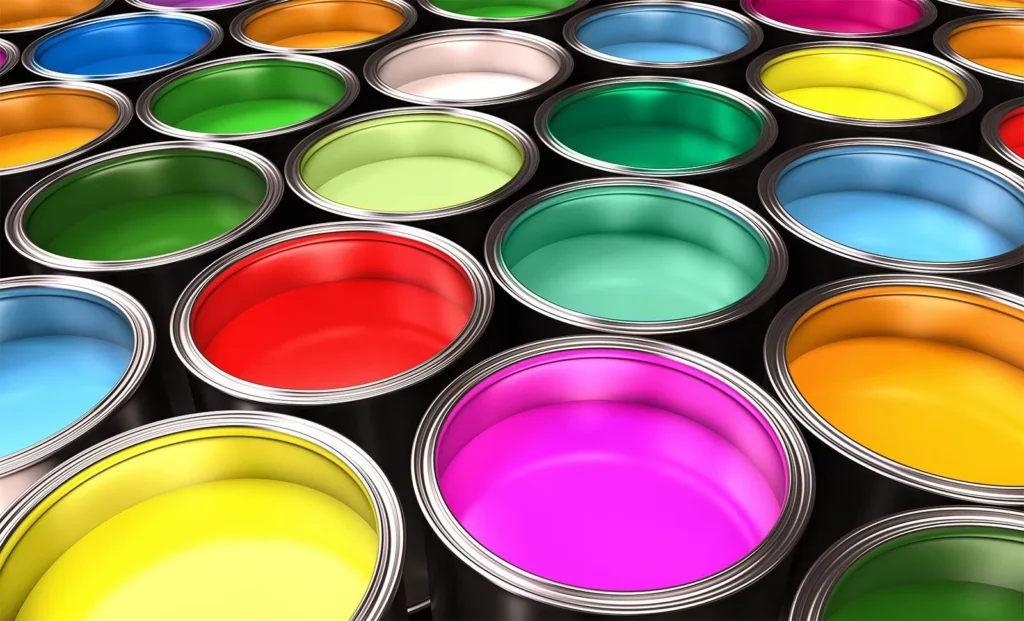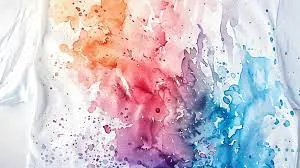Introduction
In the realm of textile dyeing, the DSP de Q Tino con Anilina Seco o Lavo method has garnered attention for its unique processes and exceptional results. This technique involves using aniline dyes, which are renowned for their vibrancy and longevity. Understanding the nuances of this dyeing method can significantly enhance the quality of dyed textiles for various applications. This detailed guide will explore all facets of the DSP de Q Tino con Anilina Seco o Lavo method, highlighting its benefits, applications, and tips for successful implementation.
What does DSP de Q Tino with Anilina Dry or Wash mean?
DSP de Q Tino con Anilina Seco o Lavo a method which involves a process of dyeing with aniline dyes by using a specific formulation known as “DSP. ” Two types are often referred to, Seco, dry and Lavo, wash. This very combination of the two allows flexible applications in textile dyeing and is thus favored in so many industries.
Understanding Aniline Dyes
Aniline dyes are synthetic dyes derived from aniline, a compound sourced from coal tar. These dyes are known for their:
- Vibrancy: Aniline dyes can produce a broad spectrum of colors, ranging from bright to muted shades.
- Color Fastness: When applied properly, these dyes exhibit excellent resistance to fading, washing, and light exposure, ensuring a long-lasting color.
- Versatility: Aniline dyes are compatible with various fibers, including natural options like cotton and wool, as well as synthetic fibers such as polyester and nylon.
These characteristics make aniline dyes an attractive choice for textile manufacturers, artists, and hobbyists.
Also read: Parfû
Benefits of DSP de Q Tino con Anilina Seco o Lavo
The DSP de Q Tino con Anilina technique has several advantages that make it desirable in the textile industry.
1. Vibrant Color Output
The most significant benefit of the DSP de Q Tino con Anilina Seco o Lavo method is, without a doubt, that it leads to saturated colors. This process makes aniline dyes reach their fullest strength, and the results are richly colored fabrics. Such products lead to glorious colorful fashion items and home textiles that are instantly recognized to represent a charm on certain products and home textiles.
2. Durability of Colors
The color fastness provided by aniline dyes allows the colors that are dyed using this technique to be worn and exposed to sunlight many times without much loss of the original shade. It is essential for such textiles that are daily cleaned or subjected to environment, since colors will not change with time.
3. Cost-Effective Solution
Aniline dyes are often more affordable than some other synthetic dye options. This makes the DSP de Q Tino con Anilina method accessible for both large-scale manufacturers and individual artisans, allowing them to achieve professional-quality results without incurring high costs.
4. Versatility Across Applications
The DSP de Q Tino con Anilina technique is adaptable across a wide range of applications, from industrial textile production to artistic craft projects. Whether dyeing fabric for clothing, upholstery, or unique art pieces, this method can be tailored to meet various needs.
The Method of DSP de Q Tino with Aniline Dry or Wash
To effectively implement the DSP de Q Tino con Anilina Seco o Lavo method, it is crucial to understand each step involved in the dyeing process. Below is a detailed breakdown of the essential stages.
Step 1: Fabric Preparation
Properly preparing the fabric before dyeing is essential to achieving even color distribution. This preparation involves several key steps:
- Washing: Thoroughly wash the fabric to remove any dirt, oils, or finishes that may hinder dye absorption. This can be accomplish using mild soap and warm water.
- Pre-Treatment: Depending on the fiber type, pre-treatment with mordants may be necessary. Mordants help to fix the dye to the fiber, enhancing color retention and vibrancy. Common mordants include alum for cotton and tannin for wool.
Step 2: Preparing the Dye Solution
Creating the dye solution is a critical step in the DSP de Q Tino con Anilina process:
- Measuring Dyes: Carefully measure the required amount of aniline dye based on the desired intensity of the color. It’s essential to follow the manufacturer’s recommendations for concentration levels.
- Dissolving Dyes: Dissolve the dye powder in warm water. Stirring the mixture thoroughly ensures that the dye is fully dissolved and evenly distributed in the solution.
Step 3: Applying the Dye
There are several techniques for applying dye in the DSP de Q Tino con Anilina Seco o Lavo method, each offering unique results.
Immersion Dyeing
In this traditional technique, the fabric is submerged in the dye bath:
- Soaking: Place the prepared fabric into the dye solution, ensuring it is fully immersed. Allow it to soak for a specific duration, depending on the desired color intensity.
- Stirring: Gently stir the fabric in the dye bath to promote even dye distribution.
Spray Dyeing
For a more controlled application, spray dyeing can be utilize:
- Spraying Technique: Using a spray bottle or airbrush, apply the dye solution onto the fabric. This method is particularly useful for creating patterns or gradients.
- Layering: Multiple layers of dye can be apply to achieve depth and complexity in the design.
Direct Printing
In this method, dye is apply directly to the fabric using screens or stencils:
- Screen Printing: Use a mesh screen to apply the dye in specific patterns.
- Block Printing: Stencils or blocks can be use to transfer dye onto the fabric, creating unique motifs.
Step 4: Fixing the Dye
After applying the dye, it is crucial to fix the color to ensure longevity:
- Heat Setting: Many aniline dyes require heat to set the color. This can be achieve by ironing the fabric or placing it in a heat press.
- Chemical Fixatives: Adding chemical fixatives to the dye bath can enhance color retention, ensuring that the dye bonds effectively with the fiber.
Step 5: Rinsing and Drying
Once the dye has been fix, rinsing the fabric is vital:
- Cold Water Rinse: Rinse the dyed fabric under cold water until the water runs clear. This removes any excess dye, preventing staining during future washes.
- Drying: Allow the fabric to air dry in a shaded area to prevent sun fading. Avoid direct sunlight during this process, as it can alter the color.

Applications of DSP de Q Tino con Anilina Seco o Lavo
The DSP de Q Tino con Anilina Seco o Lavo method is widely applicable across various sectors, offering creative possibilities for different industries.
1. Textile Manufacturing
In the textile industry, this dyeing method is employ to produce clothing, home textiles, and upholstery fabrics. Its ability to deliver vibrant, long-lasting colors makes it ideal for commercial production.
2. Fashion Design
Fashion designers often use the DSP de Q Tino con Anilina technique to create unique fabric patterns and colors for garments. The versatility of aniline dyes allows for innovative designs that set trends.
3. Art and Craft
Artists and crafters utilize this method for various projects, including fabric painting, tie-dyeing, and creating one-of-a-kind pieces. The rich palette offered by aniline dyes enables endless creativity.
4. Home Decor
DIY enthusiasts frequently apply the DSP de Q Tino con Anilina method for home decor projects. From cushion covers to curtains, this technique transforms plain fabrics into vibrant accents that enhance interior spaces.
Challenges and Considerations
While the DSP de Q Tino con Anilina Seco o Lavo technique offers many advantages, there are challenges to be aware of:
1. Color Consistency
Achieving consistent color across different batches can be difficult. Variations in dye concentration, fabric type, and application technique can lead to discrepancies. Conducting test swatches can help address this issue.
2. Health and Safety Precautions
Aniline dyes can pose health risks if not handled correctly. It is crucial to wear protective gear, including gloves and masks, during the dyeing process to prevent skin irritation and inhalation of harmful substances.
3. Environmental Impact
While synthetic dyes have improved in terms of environmental impact, concerns remain regarding their ecological footprint. Exploring eco-friendly options and sustainable practices in dyeing can help mitigate negative effects on the environment.
Tips for Successful Dyeing with DSP de Q Tino con Anilina Seco o Lavo
To maximize your success with the DSP de Q Tino con Anilina method, consider the following practical tips:
1. Conduct Test Swatches
Before dyeing larger fabric pieces, always conduct test swatches to determine the dye concentration, application technique, and resulting color. This allows for adjustments before committing to the final project.
2. Document the Process
Keeping a detailed record of your dyeing process is essential for replicating successful outcomes. Note the dye concentrations, application methods, and drying techniques to streamline future projects.
3. Use High-Quality Materials
Investing in high-quality fabrics and dyes will yield better results. Opt for reputable suppliers known for their quality products to ensure consistent and vibrant colors.
4. Experiment with Techniques
Don’t hesitate to explore various application techniques to achieve unique effects. Layering colors, using stencils, and combining different dyeing methods can lead to innovative and visually stunning results.
5. Stay Informed About Safety
Familiarize yourself with the safety guidelines for handling aniline dyes. Always work in a well-ventilated area and dispose of any waste materials responsibly to minimize environmental impact.
Conclusion
The DSP de Q Tino con Anilina Seco o Lavo method is a valuable technique in the textile dyeing industry, offering vibrant colors, durability, and versatility. By understanding the process and applying best practices, you can harness the full potential of aniline dyes to create stunning, long-lasting fabric designs. Whether you are a seasoned professional or an enthusiastic beginner, this method opens the door to a world of creativity in textile art. With careful preparation, experimentation, and attention to safety, you can elevate your dyeing projects to new heights, producing fabrics that captivate and inspire.
